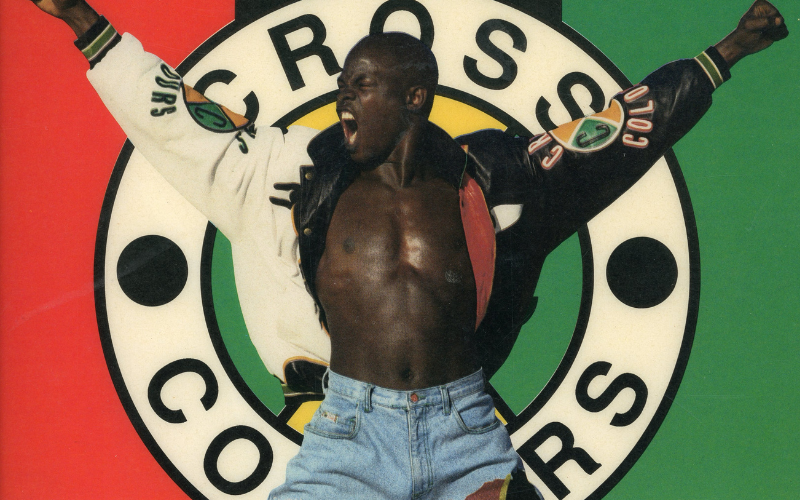
What happened to Cross Colours is a story about a brand that blew up — and faded away — fairly quickly. The brand was a cultural phenomenon in the early ”90s and gained a following with some of the biggest celebrities. The company sought to break down racial barriers one brightly colored piece of clothing at a time. But after a few years, Cross Colours lost its appeal.
Here’s what happened to Cross Colours.
The early days
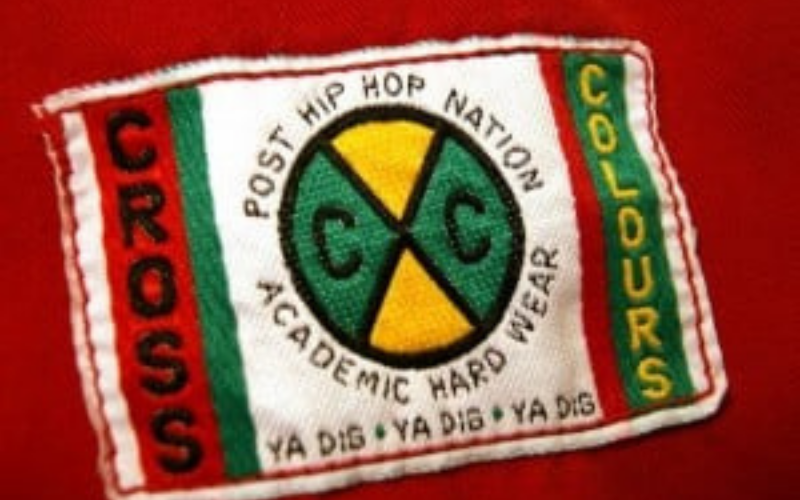
Even though hip hop was one of the most popular genres in the ‘80s and ‘90s, there wasn’t a notable brand geared toward urban culture. That all changed when fashion designer Carl Jones teamed up with fellow designer Thomas “TJ” Walker.
The year was 1989, and Carl and TJ were working at Surf Fetish, which was a company Carl had founded. After doing some brainstorming, they decided they wanted to create something for the culture and for people that were into Hip Hop. They came up with the name Cross Culture, developed the logo, and tried to register the name. But once they found out a newspaper was already using the name Cross Culture, they played around with some new name ideas and eventually settled on the name Cross Colours. They opted for the European spelling of the word “color” to differentiate themselves from the movie Colors.
According to the LA Times, they used yellow to symbolize the sun, red was for the blood of the people, green represented the earth, and black stood for the color of their skin.
During a trip to New York, they rode the subway from Harlem to Brooklyn to see what the locals were wearing. They noticed a lot of kids were wearing baggy pants, so they decided they would recreate that look for their brand.
They decided they were going to make pants with a size 38 body, but with a size 32 waist. Then they added oversized jackets and shirts to match. The clothing also had bold phrases on them, like “Clothing Without Prejudice,” “Stop D Violence” and “Educate to Elevate.”
Celebrity co-signs
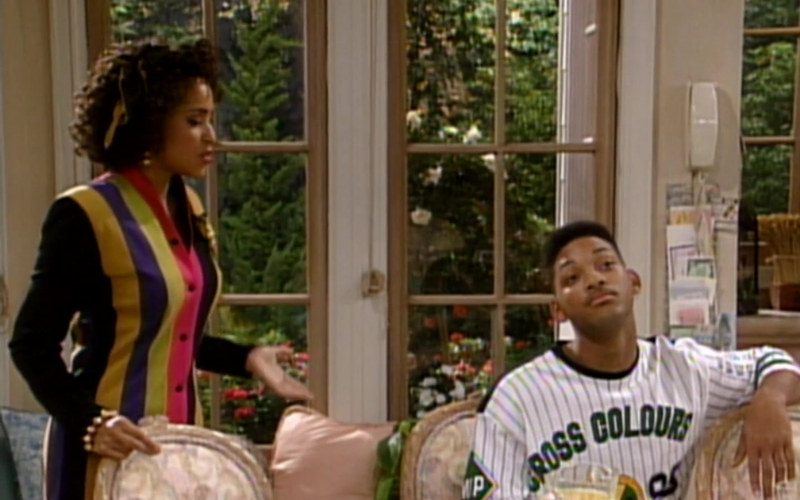
They launched their brand and their marketing director reached out to the wardrobe department for The Fresh Prince of Bel-Air. They sent Will Smith a bunch of items and he loved everything. He frequently wore Cross Colours during episodes of the show, and that’s when Carl and TJ knew they had made it.
With Will supporting the brand. It created a snowball effect. Carl said they started receiving phone calls from record companies who wanted their artists to be decked out in the latest Cross Colours items.
Cross Colours was the only black-owned clothing brand at the 1991 Las Vegas Magic Trade Show. Carl spent $300,000 of his own money at the convention, but it was all worth it. Their presence there brought streetwear to the forefront of the fashion industry. Crowds surrounded their booth and TJ told Document Journal they had a million dollars worth of orders in 48 hours. Black fashion was officially on the map.
According to the LA Times, less than a year after Cross Colours launched, the company had shipped more than $15 million dollars worth of merchandise. Carl and TJ hired 75 employees and opened a 30,000-square-foot warehouse a few miles south of downtown Los Angeles.
Everyone was wearing Cross Colours, from 2Pac to TLC, Kriss Kross, Mary J. Blige, and Stevie Wonder. The clothing also appeared on shows like Martin and Living Single.
In 1991, they met a budding fashion designer named Karl Kani. Impressed by his line of decorative jeans and baggy T-shirts, they brought him on board under their parent company, Threads 4 Life, and began distributing his clothing on a larger scale.
In 1992, during the brand’s peak, Carl and TJ were seen as culture heroes. According to the LA Times, the company was also ahead of its time. They had women working in high-ranking positions in their corporate office and they even gave jobs to inner-city teenagers to keep them off the streets. Cross Colours also held events to raise money for job training and gave away hundreds of thousands of dollars worth of clothing to those in need.
Money issues and missed deadlines
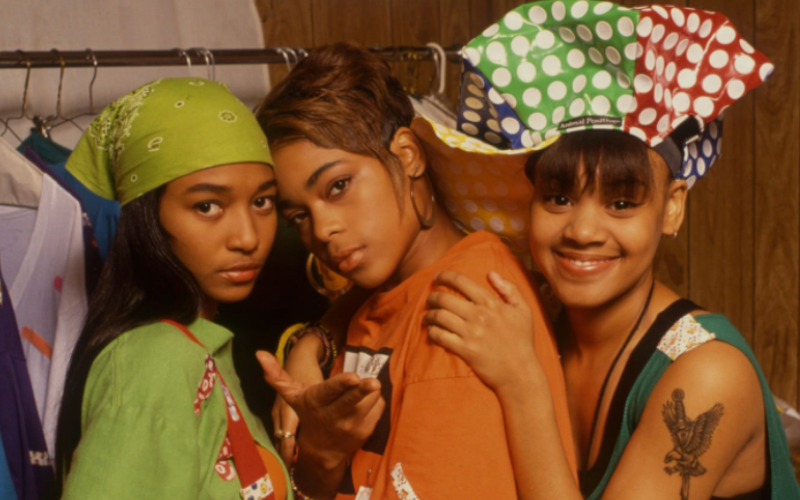
They started to expand more rapidly. In Compton and downtown Los Angeles, they opened Red, Black, and Green warehouses. They even opened a location in Beverly Hills, which they described as an urban GAP.
By the end of 1992, Cross Colours had moved into a 150,000-square-foot location and had about 300 employees. They also became known as the largest African-American-owned business in the fashion industry, and Black Enterprise Magazine named Cross Colours’ parent company its “Company of the Year.”
Cross Colours continued to boom until the 1993 Magic Trade show, which proved to be disastrous for the thriving brand. According to a source, Cross Colours’ clothes arrived at the event a day and a half late. On top of that, when the clothing finally arrived, it wasn’t in the brand’s distinctive, bright colors but it was in earth tones instead. Salespeople were reportedly shocked and confused by the rebranding. Carl told the LA Times, they were trying to move the brand into a more sophisticated direction as their customer base grew and matured.
Even their collection of pieces inspired by Magic Johnson didn’t help things. And retailers started complaining about inconsistent deliveries, missing deadlines, and unfulfilled orders.
There were also rumors of money issues. A former employee told the LA Times that the company owed money to its suppliers and some contractors weren’t releasing clothing until Cross Colours paid them upfront and in cash.
In the spring of 1993, Cross Colours clothing popped up at discount outlets, which caused issues for retailers who were in competition with stores that were selling the same clothes for 50% less.
Merry-Go-Round, the clothing chain that made up 60% of Cross Colours’ sales, filed for bankruptcy in 1993. Around that time, JC Penney was interested in stocking Cross Colours. However, the brand didn’t have the resources to go into that large of a department store.
The brand’s money and options were running out. A former employee told the LA Times that one day, Carl told a group of employees that their jobs were safe, but by that afternoon, they were all laid off. Members of the Nation of Islam, who served as security for Cross Colours, were let go as well. Disgruntled employees recalled that as more people were let go, Carl and TJ purchased fancier cars, including Jaguars, Ferraris, and Rolls Royces. Carl clapped back by saying the cars had nothing to do with the financial wellbeing of the company. He added, “Some employees confused business and personal.”
By the end of 1993, the company had about 20 employees.
Despite what happened to Cross Colours, the brand is making a comeback
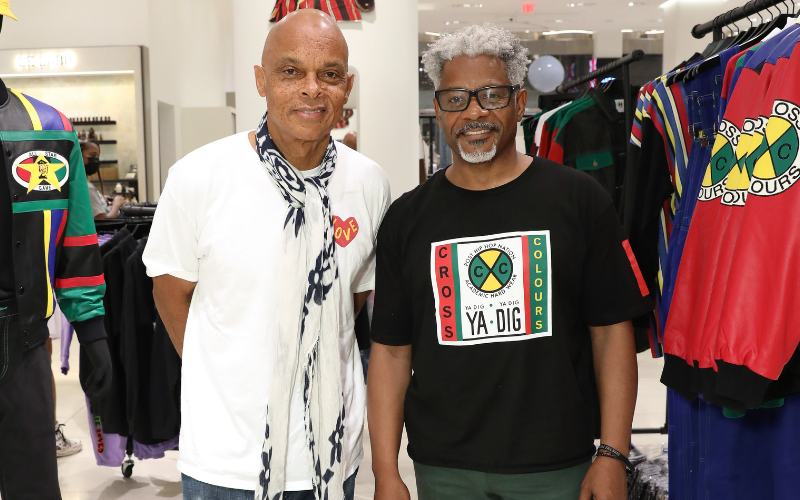
So what happened to Cross Colours? Some sources say a creditor took control of the Cross Colours brand. However, Carl and TJ kept designing and putting out clothing. In 1994, they had new, toned-down designs at Macy’s, Foot Locker, and Merry-Go-Round, which came out of bankruptcy.
But then they decided to take a break. Carl said they needed to step away and they would return when things felt right. That time didn’t come until 2014 when Urban Outfitters approached Carl to start selling Cross Colours again. They decided to go for it and relaunched the brand under a new parent company called Colours Licensing LLC.
In 2018, Bruno Mars and Cardi B wore the brand’s distinctive clothing during their Grammy performance, and in 2019, Cross Colours was a featured exhibition at the California African American Museum in LA.
Today, Cross Colours continues to build and re-establish itself as a brand for a new generation. In July 2021, the brand was honored with a special two-week exhibition pop-up shop at Nordstrom. The exhibit was a combination of old and new pieces, along with an emphasis on the brand’s history. In a press release, TJ said, “To us, this collaboration reinforces the fact that the brand is important to the community and to the culture.”
Are you surprised by what happened to Cross Colours?
